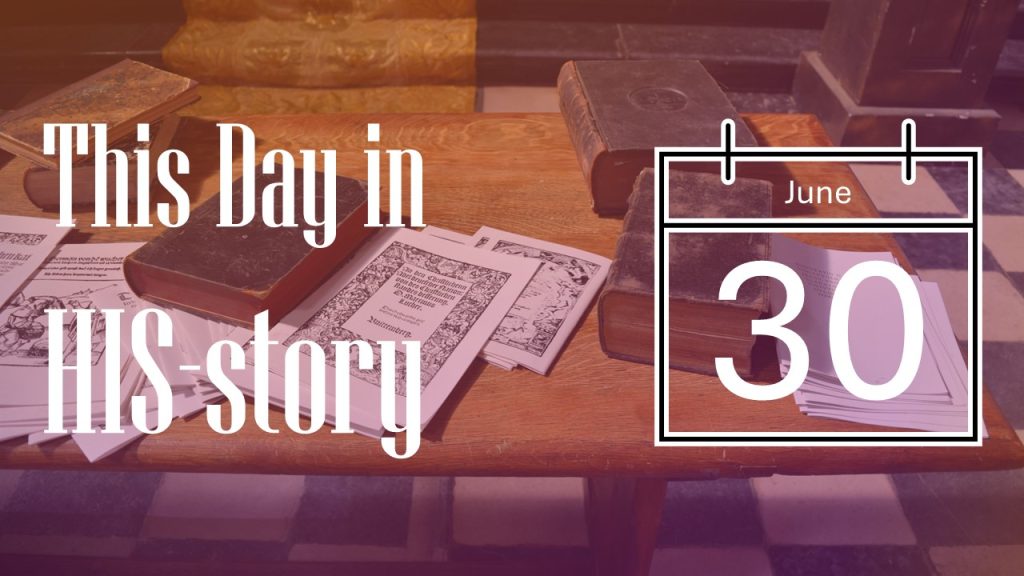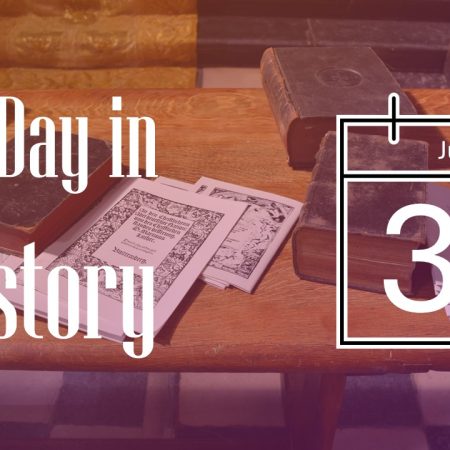
1637
ON THIS DAY, 30 JUNE 1637, William Prynne was pilloried with Henry Burton and John Bastwick. The authorities cropped the stubs of Prynne’s ears, cropped three years earlier for a libel, and he was branded with the letters “S.L.,” standing for “Seditious Libeler.” On his way back to prison, he wrote some Latin verses claiming that S.L. stood for stigmata laudis—a pun meaning either “sign of praise,” or “sign of Laud.” Archbishop William Laud was his persecutor.

Prynne, Burton, and Bastwick were Puritans who had no connection with each other apart from standing trial together. Each had criticized Charles I’s government and the Church of England. (Prynne’s pamphlet repudiating acting, a favorite pastime of the queen, was responsible for his first ear cropping.) Prynne alone wrote two hundred political and religious pamphlets over the course of his stormy life, several of them running to hundreds of pages. The Star Chamber, an abusive court directly under the king’s authority, convicted him of libel. All three prisoners were sent to fortresses isolated from friends and family, denied writing implements, and forbidden most books. Crowds lined Prynne’s route to Caernarvon Castle, North Wales, cheering him and shouting, “God bless you!”
The government soon shifted him to Jersey Island to make it harder for him to communicate with the outer world. This move was kept secret to prevent crowds showing their support. After Prynne was taken aboard ship, the weather became so bad that the four-hundred-mile voyage took fourteen weeks and the leaky tub was often close to foundering.
On Jersey Island, Prynne’s imprisonment was alleviated by Sir Philip Carteret, who treated him kindly. He often invited the prisoner to meals with his family and talked with him. Burton’s imprisonment on Guernsey was also moderate—he managed to write a four-hundred page book on smuggled paper with homemade ink and goose feathers for quills. Poor Bastwick got no breaks: he was wretchedly treated on the Scilly Isles, chained nightly in a dungeon, and never given a bed.
The Parliament that King Charles I summoned in November 1640 (the Long Parliament) repudiated some of his despotic actions. It ordered the release of Prynne, Burton, and Bastwick. The three returned to London amid cheers. Naturally Prynne wrote an account of his imprisonment.
After the downfall of Charles, the new Commonwealth employed Prynne in its prosecution of Laud. Prynne amassed evidence against his former persecutor, apparently coaching witnesses to ensure he obtained a conviction against his enemy. However, Laud had acted legally, if unjustly, and Parliament had to change penalties after the fact to sentence him to death.
The triumphant Prynne soon fell afoul of Cromwell’s government and spent more years in exile. Although a Stuart king had treated him badly, and although Prynne was usually on the side of Parliament, he sided with Charles II. Following the restoration of Stuart rule, Charles II appointed him as historian of the tower of London. Prynne compiled a mass of information and court records that helped preserve the details of the period.
1758
James Stephen had a law practice in the West Indies. One day, he witnessed two black slaves accused of rape and condemned on the flimsiest evidence. They were burned alive. This so horrified Stephen that he began a correspondence with the famed slavery abolitionist William Wilberforce. Secretly he provided Wilberforce with information about slavery in the islands. In time, Stephen would become a leader in the Clapham sect, a group of mostly evangelical Christians working with Wilberforce. He wrote several influential books against the slave trade.
Born on this day June 30, 1758, Stephen struggled through financial difficulties to get an education. As a young man he did not seem a likely candidate for leadership in any evangelical group; engaged to be married to one woman, he betrayed both her and his closest friend, fathering an illegitimate child with his friend’s fiancé. His manners were coarse, his language rough, and he flew into sudden rages.

However, after meeting with Wilberforce, he became a true follower of Christ. When his his first wife died, he married Wilberforce’s sister, Sally. Wilberforce wrote, “Stephen is an improved and improving character, one of those whom religion has transformed and in whom it has triumphed by conquering some natural infirmities.” Meanwhile, Stephen had been elected to Parliament and was a close ally of Wilberforce in the fight against slavery. (At a crucial moment in the abolition battle, his beloved wife Sally slipped on ice and broke her leg; it grieved James Stephen that he had to leave her ill-attended rather than let the cause down in Parliament.)
It was Stephen’s fertile mind which came up with two ideas that helped break the deadlock over ending the slave trade. The first of these was during the struggle with Napoleon. He suggested extending anti-slavery language to a bill which was certain of support because it was viewed as a war measure, designed to stop neutral ships from delivering cargoes to France. (This bill so infuriated the United States that it led to the War of 1812.) His second proposal was a bill to require registration of all slaves in British possessions. This never passed, but it brought to light so many abuses that it swung public opinion against slavery.
Stephen became Master-in-Chancery, a lawyer for the government. Enemies sneered that this was a pay-off for his support of abolition. In 1815 Stephen resigned his Parliamentary position when the government would not support the registry bill. He died in 1832, and is now assessed as the most important member of the Clapham Sect second only to Wilberforce himself.
